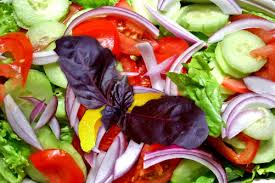
DIET FIBERS AND THEIR HEALTH BENEFITS
In this article, we’re going to look at the effect of Dietary Fiber and
how it effects our health.
Fiber is the plant matter that is indigestible
in human body. They can be soluble or insoluble. There’s definitely benefits to
both soluble and insoluble fiber, if you had to choose one over the other, it
would be soluble fiber that’s most associated with reduced heart disease risk
because they help reduce the LDL cholesterol level. Soluble fiber dissolves in
water, it forms a gel like substance. Many grains, and whole grains, do
contain, both soluble and insoluble fiber.
Oats have the highest proportion of soluble fiber of any grain and
that’s why they are so useful for our health . Other good sources of soluble
fiber include foods like oatmeal, oat bran, beans, peas, rice bran, barley,
citrus fruits, strawberries, and apple pulp. You should focus on eating more
foods that contain naturally occurring sources of fiber and you will naturally
be getting both more soluble and insoluble fiber.
Soluble fiber helps to improve hyperlipidemia through the combined
effects of the following 3 things.
Soluble fiber 1 ) helps to delay gastric
emptying. When you eat a food containing soluble fiber, it takes your body a
longer time to digest that food than it would if it didn’t have the soluble
fiber in it. 2 ) helps to increase the excretion of bile acids. 3 ) helps to
reduce, the hepatic synthesis of cholesterol
If you eat fibers you feel full and this helps you to eat less. If I ask
you to eat an orange or to drink the juice out of it you understand the
difference . If then you have a healthy weight, you’re going to be at lower
risk for heart disease. There’s also the potential that the gastric emptying
component may have a beneficial effect on insulin sensitivity. And insulin
sensitivity is linked to heart disease risk.
The second mechanism by which soluble fiber
works is to increase the excretion of bile acids. Soluble fiber binds with bile
acids in your small intestine, and helps remove it from the body. This reduces
the rate of bile acid recycling. The loss of bile acids in your stool
stimulates your liver to increase its uptake from the circulation and to
replenish your supply. The result is that your serum total and LDL cholesterol
levels drop down.
The third potential mechanism by which soluble fiber helps to impact
heart health is by decreasing your liver’s synthesis of cholesterol. Some
soluble fibers belong to a class of compounds called oligosaccharides. These
oligosaccharides are fermented in the lower portion of your gut into short
chained fatty acids that enter the circulatory system and tell your liver to
make less cholesterol
Insoluble fibers, to some degree do play a role on heart as well. They
promote motility in your gut and increase your stool bulk. They also are also
linked to lower rates of cardiovascular disease even if less than soluble. They
may help lower your blood pressure or your risk of blood clots and they may
help lower inflammation as well.
You get the heart healthy benefits from the
combination of the soluble, you get a little bit more of the gut health
benefits from the insoluble. At the end of the day, both of those are good
things.
But these positive effects are related to fibers associated with food
and not just fiber supplements. So you can’t eat a crappy diet and then turn
around and eat a lot of soluble and insoluble fiber supplements, and think that
you’re going to get the same benefits.
What sort of foods have fiber in them? Fruits, vegetables, whole grains,
legumes, nuts and seeds. Many of the foods that are typical, or are large
components of the western diet are actually quite low in fiber.
In the last 24 hours have you consumed dairy foods? Meat and poultry,
eggs, any sort of beverage, unless it’s 100% fruit juice which doesn’t even
have a lot of fiber, most beverages have no fiber, oils and fats have no fiber
as well.
Again, working on the focus to reduce our animal products, and increase
our plant products, not only helps to improve the fat profile of our diet, but
we also can get all of the protein that we need.
How much fiber a day do we need, well, there are all sorts of different
recommendations, but in the United States, the Institute of Medicine recommends
that for males, if 50 or younger, they should have 38 grams of fiber, 51 or
older, 30 grams of fiber; females under age 50, 25 grams, and those over, 21
grams.
Why do males generally have higher fiber needs than do females? Well
there seems to be a link between the amount of fiber that individuals eat and
their risk for colon cancer. males are at a higher risk for developing colon
cancer. Plus men eat more than women in general and they need more fibers
Most of us would be well-served to eat 30 grams
of fiber a day. The average American actually only eats 15 grams a day.
The key is that every time you eat you want to have 4, 5 or 6 grams of
fiber. If you do that and you eat 3, 4 or 5 times a day, 4 or 5 more so, you’re
going to be able to meet those 30 gram Per day. Usually you can’t just sit down
and eat 30 grams of fiber in one meal.
But if you focus on having whole grains, fruits and vegetables or legumes at every meal and snack you can easily get to that 30 grams recommendation. Researchers found that a high total dietary fiber intake was linked to a 40% lower risk of coronary heart disease. And, furthermore, the researchers found that yes, while fruits and vegetables were important, that cereal fiber, from grains, was particularly beneficial.
